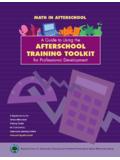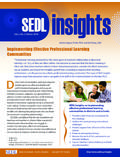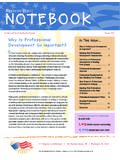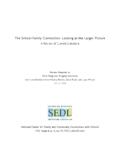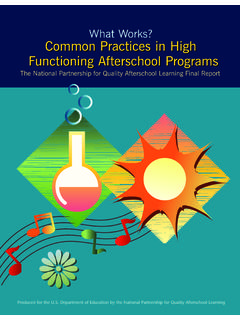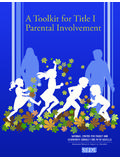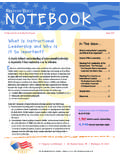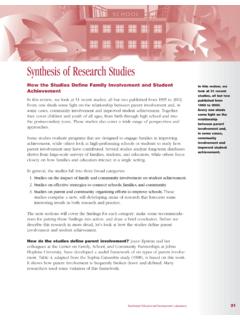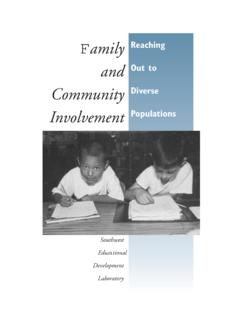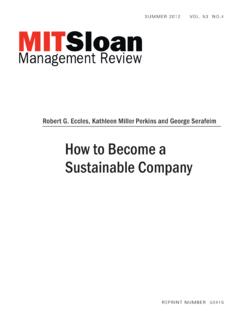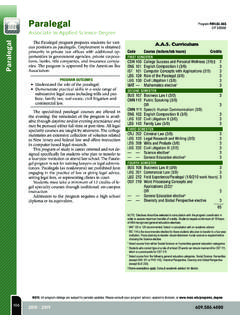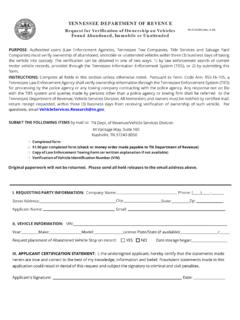Transcription of Constructing Knowledge in the Classroom - AIR | SEDL
1 Southwest Consortium for the Improvement of Mathematics and Science TeachingConstructing Knowledgein the ClassroomWinter 1995 Volume 1, Number 3 HIGHLIGHTS continued on page 2 Building anUnderstanding ofConstructivismPAGE 3 Geometry for the Earlyand Middle Grades:From the NCTMS tandardsPAGE 4 Which Container Holds the Most? An Activity for Younger ChildrenPAGE 5 Building Houses: An Activity for Older StudentsPAGE 6 Geometry for Grades 9 12: From the NCTMS tandardsPAGE 7 Resources andOpportunitiesPAGE 8 Help for Mathematicsand Science Teachers from ENCPAGE known truth owes its existence to the mind that knows Vico, 1668 1744In the Classroom A May 1990 article in Phi DeltaKappanrecounts the story of afourth-grade teacher who challengedher students to experiment with theidea of heat. Convinced that theirhats, sweaters, blankets, and rugsall produced heat on a cold winterday, the children placed thermo-meters inside the garments andrecorded the results.
2 After three daysthe clothes still showed no rise intemperature. Although some of thestudents began to realize that theyneeded alternative explanations,many clung to their belief that theclothing generated heat. They werewilling to continue testing the garments until their hypothesis was proven the entire year, if necessary. The teacher had to setlimits for the task and guide the stu-dents examination of the constructivist teacher sets up problems and monitors studentexploration, guides the direction ofstudent inquiry, and promotes newpatterns of thinking. Classes cantake unexpected turns as studentsare given the autonomy to directtheir own explorations. Raw data,How do we learn? Watching ayoung child grow from infancy totoddlerhood, we marvel at theamount of learning that has allowedher to understand her expandingenvironment.
3 Those early years provide the basis for language,physical dexterity, social under-standing, and emotional develop-ment that she will use for the rest of her life. What a vast amount ofknowledge is acquired before shesets foot in school!This child taught herself by gathering information and experiencing the world around learning exemplifies constru-tivism an idea that has causedmuch excitement and interestamong educators. Constructivismemphasizes the importance of theknowledge, beliefs, and skills anindividual brings to the experienceof learning. It recognizes the construction of new understandingas a combination of prior learning,new information, and readiness tolearn. Individuals make choicesabout what new ideas to accept and how to fit them into their established views of the COMPASS2 Constructing Knowledge , continuedprimary sources, and interactivematerials provide experiences thatstudents can use to build under-standing.
4 For example, rather thanreading about the census, studentsin constructivist classrooms exam-ine and interpret census data. Orbetter yet, they plan a mini-census,gather their own data, and interpret the results. Holding on to WhatThey BelieveOur students come from a richarray of different backgrounds andways of thinking. Myths, taboos,things we learn from our families,friends, and teachers all are part of cultural influence. Content isembedded in culture and it is difficult to separate the two. Whenpresented with information in theclassroom that contradicts existingideas, a student may try to accom-modate both interpretations, ratherthan change deeply held the teacher realizes whatviews the students hold, classroomteaching can actually help studentsconstruct faulty ideas. If the Classroom can provide a neutral zone where studentsexchange their personal views and test them against the ideas ofothers, each student can continueto build understanding based on empirical evidence.
5 Hands-on activities and observations of the natural world provide shared Student autonomy and initiative are accepted and respecting students ideas andencouraging independent thinking,teachers help students attain their own intellectual identity. Studentswho frame questions and issues andthen go about analyzing andanswering them take responsibilityfor their own learning and become problem solvers. The teacher asks open-ended questions and allows wait time thought takestime and is often built on others ideas and comments. The waysteachers ask questions and the waysstudents respond will structure thesuccess of student inquiry. Higher-level thinking is constructivist teacher challengesstudents to reach beyond the simplefactual response. He encourages students to connect and summarizeconcepts by analyzing, predicting,justifying, and defending their ideas.
6 Students are engaged in dialoguewith the teacher and with discourse helps studentschange or reinforce their ideas. Ifthey have the chance to presentIn a Constructivist they think and hear others ideas, students can build a personal Knowledge base that they understand. Only when they feel comfortable enough toexpress their ideas will meaningfulclassroom dialogue occur. Students are engaged in experi-ences that challenge hypothesesand encourage to make predictions, students often generate varyinghypotheses about natural phenome-na. The constructivist teacher provides ample opportunities for students to test their hypotheses,especially through group discussion of concrete experiences. The class uses raw data, primary sources, manipulatives,and physical, interactive constructivist approach involvesstudents in real-world possibilities,then helps them generate theabstractions that bind suggestions are adapted from In Search of Understanding: The Case forConstructivist Classroomsby Jacqueline and Martin G.
7 Brooks (Alexandria,VA: Association for Supervision andCurriculum Development, 1993). experiences for those construc-tions. For example, to study thephases of the moon, the classcould keep a sky journal (anobservational log of the moon andits shape in the sky) for severalweeks and discuss the variousobservations. If models, text refer-ences, or illustrations are availableas resources, students shouldknow that these are the results ofothers observations and specula-tions. Such references are actuallythe constructions by others ofthe current understanding of theworld around intoConstructivism Just as students do not easily letgo of their ideas, neither do schoolboards, principals, parents, or, forthat matter, teachers. Ideas likestudent autonomy and learner-driven inquiry are not easily accepted.
8 Required course contentand externally applied assess-ments are realities that teachersmust accommodate. A teacherinspired to change to construc-tivist instruction must incorporatethose realities into her approach. She might begin gradually, trying one or two constructivist explorations in the regular cur-riculum. Listening to students as they discuss ideas together is a good way to start shifting thebalance of responsibility to thelearner. Another step is using primary sources and raw data asthe basis of inquiry, rather thanrelying solely on the text. If students begin thinking aboutaccumulated Knowledge as anevolving explanation of naturalphenomena, their questions cantake on an exciting dimension. In the next two or three decades,research will change the way mostof the accepted facts of today areperceived.
9 Our challenge is to foster students abilities so theycan continue to learn and buildtheir understanding based on thechanging world around activities and exercises alone do not go to the heart of constructivism, but books have laid the groundwork for thisapproach to learning. The basic writings in this field are sometimesinteresting and often illuminating, even though they cannot give anyone constructivism. Teachers, however, can use these works tobuild their own understanding of constructivism and its place in theclassroom. Here are some representative selections of constructivistthinking and of useful guides to constructivist a philosophy of learning, constructivism can be traced at least to the eighteenth century and the work of the Neapolitan philosopherGiambattista Vico, who held that humans can only clearly under-stand what they have themselves constructed.
10 Many others workedwith these ideas, but the first major contemporaries to develop aclear idea of constructivism as applied to classrooms and childhooddevelopment were Jean Piaget and John Dewey. For Dewey education depended on action. Knowledge and ideasemerged only from a situation in which learners had to draw them out of experiences that had meaning and importance to them (seeDemocracy and Education,1916). These situations had to occur in a social context, such as a Classroom , where students joined in manipulating materials and, thus, created a community of learners who built their Knowledge together. Piaget s constructivism is based on his view of the psychological development of children. In a short summation of his educationalthoughts (To Understand Is to Invent,1973), Piaget called for teachersto understand the steps in the development of the child s mind.
